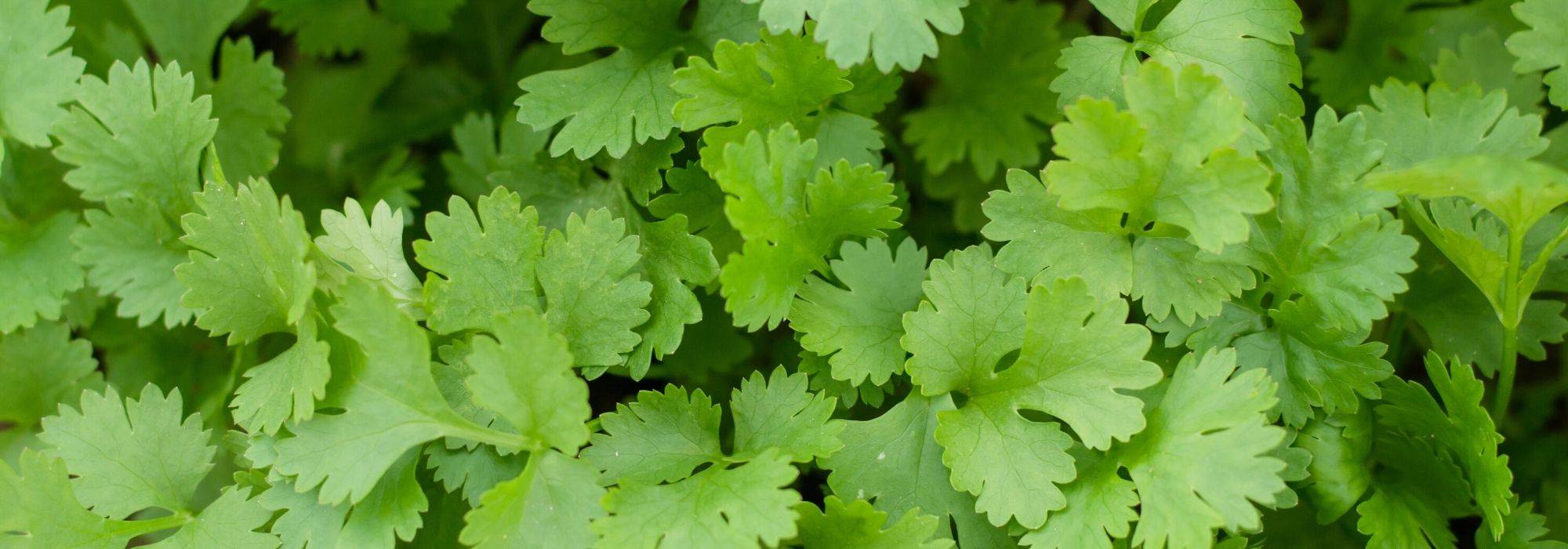
Coriander: cultivation, harvest, benefits
Contents
Coriander in a nutshell
- Coriander is an annual herb and a medicinal plant valued for its benefits
- Its finely cut foliage with a lemony taste resembles that of its cousin parsley
- In cooking, its fresh leaves and dried seeds are used to flavour many recipes and herbal teas
- Easy to grow, it can be sown or planted in pots or in the ground
- Essential in the vegetable garden, it also has a place in the ornamental garden in borders and beds
A word from our expert
Coriander is a highly aromatic plant, grown for its culinary qualities as well as its medicinal properties. Known since antiquity, it offers numerous benefits.
Very similar to parsley, this culinary herb is highly valued in cooking for its finely cut foliage and dried seeds that possess a powerful lemony aroma, allowing it to flavour many recipes and even herbal teas!
It naturally finds its place in the vegetable garden, in the herb garden, in pots on a balcony, and also graces natural and wild gardens.
Easy to grow, it requires only sunlight and regular watering. Coriander can be sown directly in the soil or in pots in spring and harvested throughout the summer!
What are the properties of coriander? Where and when should you sow or plant it? When and how should you harvest it? Here are all our tips on this ornamental and useful aromatic plant!
Description and Botany
Botanical data
- Latin name Coriandrum
- Family Apiaceae
- Common name Coriander, Chinese parsley, Arab parsley
- Flowering June to September
- Height 0.60 to 1 m
- Sun exposure Sun, partial shade
- Soil type Rich and light
- Hardiness Frost-sensitive
The Coriander, also known as “Chinese parsley” or “Arab parsley”, is a culinary, medicinal, and aromatic herb from the Apiaceae family (formerly Umbelliferae), like Chervil and Dill. This small annual, native to Asia, Southern Europe, or the Near East, has naturalised in many regions of France.
While the genus includes two species, only one is cultivated, Coriandrum sativum, but there are several varieties such as Coriander ‘Calypso’ or Coriandrum sativum ‘Marino’, which are very resistant to bolting.
Coriander forms a beautiful, bushy, highly branched clump from a taproot, standing erect and spreading, reaching heights of 0.50 to 0.80 m and spreading about 25 cm.
The slender, branching stems bear aromatic foliage that tapers towards the top. The leaves are flat and become sparser towards the upper part. The lower leaves are petiolate, broad, and divided like those of flat-leaf parsley or chervil, while the upper leaves are as light and laciniate as those of fennel or dill. This deciduous foliage, extremely fine, displays beautiful shades of green. Its pungent aroma evokes a mix of celery with a hint of anise, lemon, or orange. The leaves are used in cooking to flavour all sorts of dishes.
Flowering occurs between May and September, depending on the sowing date. Located at the tips of the stems, the flowers take the form of umbels, gathering small white or slightly pink flowers. This flowering emits a very particular scent, often described as foul.
These light umbels attract bees and other beneficial insects to the garden throughout the summer.
At the end of summer, they transform into small ribbed seeds, oval to spherical diachenes. Initially green, they turn light brown at maturity. When fresh and still green, they release the same aroma as the leaves when crushed, hence the name given to the plant: “koris” in Greek meaning “bug”, in reference to their distinctive scent. The seeds contain a very aromatic oil and essence and are highly valued when dried, either whole or ground, to flavour dishes.

The coriander: Foliage, flowering, and seeds
Not hardy, coriander is grown as an annual aromatic plant in our gardens. However, it does self-seed spontaneously. Easy to cultivate, it thrives in sun or partial shade, sheltered from the wind, in fairly rich and cool soil. It can be grown in the vegetable garden alongside its aromatic cousins, and it will also find a place in pots or window boxes on the balcony or terrace, as well as in a natural garden in beds or borders. It will easily fit into a pocket vegetable garden!
Since antiquity, coriander leaves and seeds have been emblematic of Eastern, Asian, and Indian cuisine. Coriander also possesses numerous therapeutic virtues, particularly carminative, calming, and digestive.
Read also
Create a spiralled herb gardenMain species and varieties of Coriander
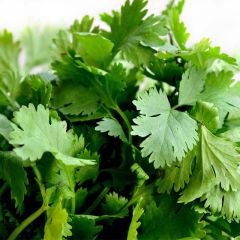
Coriandrum sativum Organic
- Height at maturity 50 cm
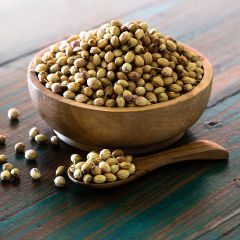
Coriandrum sativum Fine-seeded
- Height at maturity 40 cm
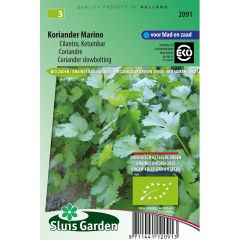
Coriandrum sativum Marino
- Height at maturity 50 cm
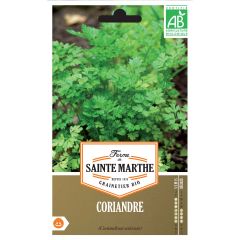
Coriandrum sativum 'Saint Marthe's Farm'
- Height at maturity 50 cm
Coriander Eagle plants - Coriandrum sativum
- Flowering time August to November
- Height at maturity 50 cm
Discover other Coriander seeds
View all →Available in 1 sizes
Available in 1 sizes
Available in 1 sizes
Available in 1 sizes
Available in 1 sizes
Available in 1 sizes
Available in 1 sizes
Available in 1 sizes
Available in 1 sizes
Planting and sowing
Where to Plant and Sow Coriander?
Frost-sensitive, Coriander disappears with frost and is grown as an annual in our gardens, where it will self-seed if it is happy. It is easy to grow, either in the ground or in pots.
Plant it in full sun or partial shade in the hottest regions. It will thrive in humus-bearing, light, well-drained, and cool soil, slightly alkaline, although it adapts to most soil types. Ensure it has a sheltered spot away from drafts. Taller than wide, provide enough space for it to flourish without overshadowing its neighbours.
Coriander is a good companion in the vegetable garden and in herb beds, where it attracts or repels certain insects. With its bushy silhouette and fresh colours, it fits equally well in natural gardens, in herbaceous borders, or a slightly wild mixed border.
When and How to Sow It?
The Coriander is best sown directly in the ground or in pots as it does not transplant well. The soil should be warm enough, as a temperature above 15°C is necessary for germination. We recommend sowing it in spring, after the frost from April to May, depending on the region, for a harvest two months after sowing. For an early harvest, sowing can be done under cover from March. Tip: stagger your sowings (sow until September) to extend the harvest period!
In the Ground
- Loosen the soil deeply and enrich it with compost
- Sow in rows, spacing the rows 30 to 40 cm apart or in clusters of 4 to 5 seeds
- Cover the seeds with 1 cm of potting soil or fine soil
- Lightly firm down with the back of a rake
- Water gently and keep moist until germination, about 15 days later
- When the plants have 4 to 5 leaves, thin them out to keep one plant every 10 to 30 cm
In Pots
The Coriander can also be sown directly in pots 20 to 40 cm in diameter or in window boxes.
- Spread a layer of clay balls at the bottom of the container
- In potting soil, bury 2 to 3 seeds 1 cm deep
- Thin out to keep only 2 to 3 plants per container
- Place in the sun and sheltered from the wind
- Water regularly
All our tips for successfully sowing aromatic plants are on our blog!
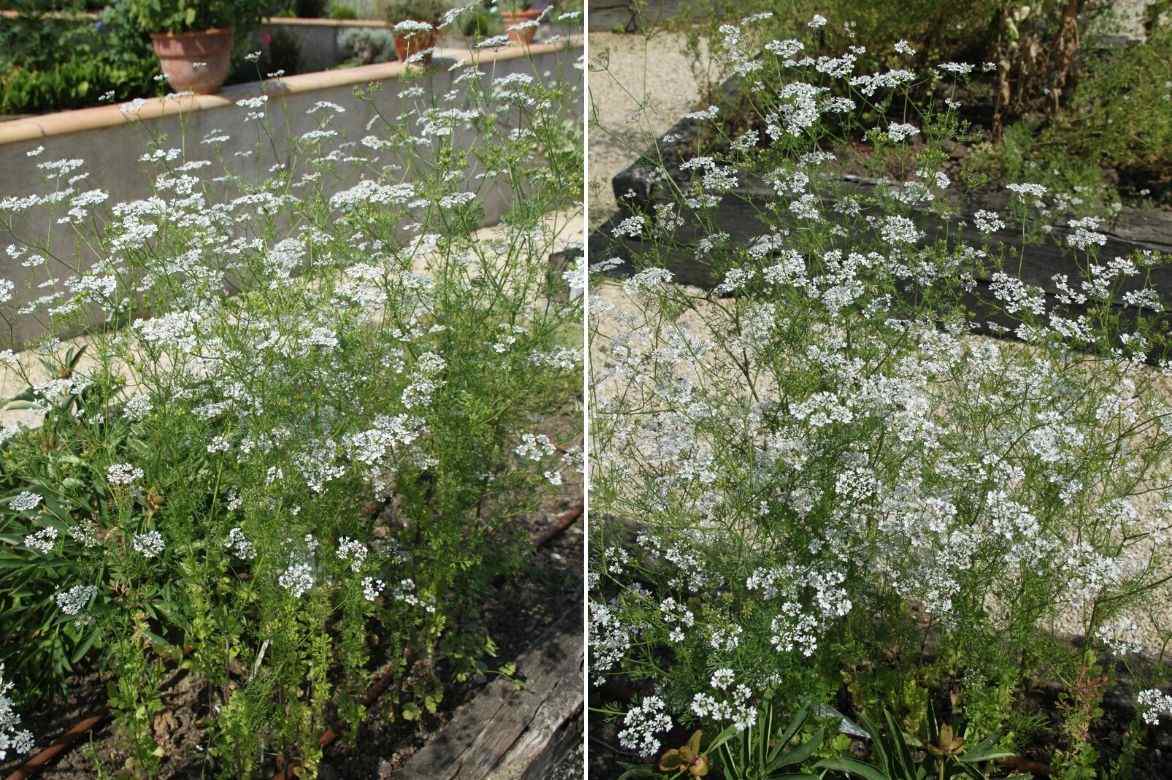
Coriander in Bloom
Read also
Sowing of aromatic plantsWhen and how to plant coriander?
If you prefer to opt for our plug plants of Coriander, it’s very easy! Planting takes place from April to August, for a harvest from June to October.
In open ground
Space the young plants about 30 cm apart.
- Loosen the soil well,
- Dig a hole three times the volume of the plug plant,
- Spread gravel at the bottom of the planting hole,
- Place the plug plant and cover with garden soil enriched with compost,
- Firm down well,
- Water generously,
- Mulch.
Follow our tips for properly planting an annual!
In pots
Choose a pot of at least 30 cm in diameter for 2 to 3 young plants of Coriander. Space the young plants 10 to 20 cm apart in all directions.
- Spread clay balls at the bottom of the drainage hole,
- Plant the plug plant in a mixture of garden soil and potting compost,
- Mulch around the base,
- Water as soon as the soil is dry.
Harvesting, Storing, and Using Coriander
Harvesting Leaves:
The harvest extends, depending on planting dates, from early summer to autumn.
Fresh leaves of coriander are harvested from late spring until the end of summer, as needed. Cut stems that are neither yellowed nor wilted, trimming them close to the ground with scissors or by hand.
When and How to Harvest Seeds?
Seeds of coriander are harvested in late summer or very early autumn, when they have browned just before full ripeness. Cut the stems close to the ground and collect the seeds by shaking the umbels over a clean cloth or by crushing the umbels in your hands.
Storage:
The highly aromatic leaves of coriander are best consumed fresh, retaining their full flavour and aroma. The leafy stems of coriander do not keep for more than a few days in the refrigerator wrapped in damp absorbent paper or placed in a glass of water, but can last several months when dried or frozen. Once threshed and dried (for a day in the shade in a well-ventilated and dry place), the seeds can be stored for over a year in a paper bag, airtight containers, or jars, at room temperature and away from moisture.
Usage:
Whether fresh or dried, the leaves of coriander are widely used in cooking. It is an essential condiment that features in a multitude of traditional dishes. Finely chopped, they will impart a powerful, very fresh and spicy aroma, with a slight bitterness, and flavour marinades, fish, poultry, salads, and tagines. Cooking alters their flavour.
The seeds can be consumed whole or ground into powder. They have a subtle bitter orange taste and are used whole to flavour pickles and olive oil. They are essential for flavouring Greek-style mushrooms, terrines, and for seasoning curries, chillies, and Indian chutneys, as well as Algerian chorba. They are included in many blends such as curry powder or paste. Ground, they are perfect in spice breads, on fish, rice, and aubergines. They also flavour certain liqueurs and the famous stimulating “Melissa Water.”
Flower buds are widely used in Chinese, Indian, or Pakistani cuisine.
The root can also be consumed to flavour soups or crushed or pickled like garlic. Coriander is also used in infusions with digestive and calming properties that promote sleep.
With its zesty and peppery aroma, coriander is widely used in perfumery.
→ Learn more with our tutorial: How to harvest, dry, and use coriander?
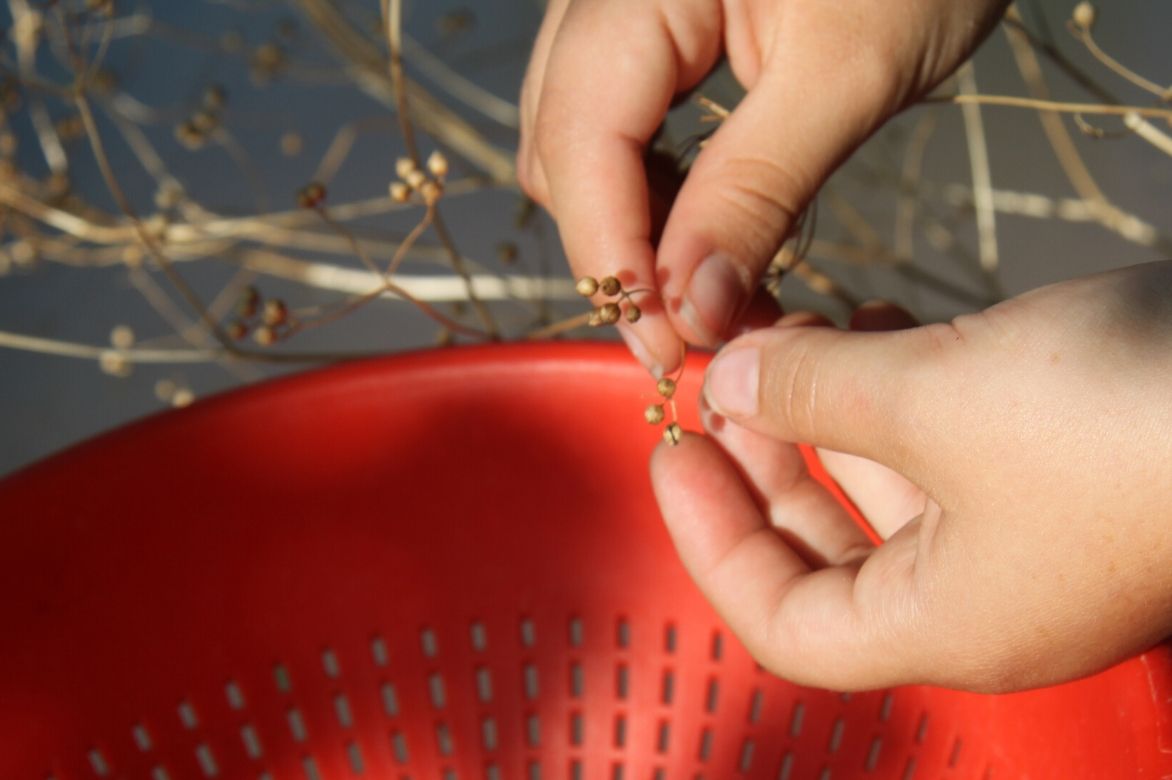
Harvesting coriander seeds
Benefits and properties of coriander
In addition to its culinary qualities, coriander has tonic, antioxidant, antiseptic, stimulating, and even aphrodisiac properties! Coriander is used to combat rheumatism, anxiety, insomnia, spasms, and to aid digestion. The leaves and seeds of coriander are rich in vitamin K. A relaxing essential oil is extracted from its seeds.
Maintenance and Care
Coriander is a low-maintenance annual plant. It enjoys sunlight and warmth but not drought: if rainfall is scarce, provide it with some watering. A lack of water can cause coriander to run to seed prematurely. To reduce the need for watering, we recommend mulching the base with fine layers of grass clippings or dead leaves. Regularly hoe and weed around the base.
In pots, very regular watering is necessary.
Coriander goes to seed quite quickly, although new varieties exhibit a slower running to seed: cutting the flower stems will help prevent running to seed and spontaneous sowing.
The plant dies with the arrival of cold weather: pull up the faded clumps.
Diseases and potential pests
Coriander is a resilient plant and a good companion in both vegetable gardens and ornamental gardens; its scent repels certain insects such as carrot flies and Colorado beetles.
The leaves can, however, be infested with aphids: spray with water mixed with 5% black soap.
Multiplication
Coriander is easily propagated by sowing (see above) with well-dried seeds that you have harvested; otherwise, choose from our seeds.
Pairing coriander
Coriander is a great ally in the vegetable garden. It repels Colorado beetles while attracting bees that assist in the fertilisation of your vegetable plants. Plant it among carrots and cucumbers as it also deters the fly. In the vegetable garden, it pairs well with cabbage, onions, and potatoes. However, avoid growing it alongside fennel.
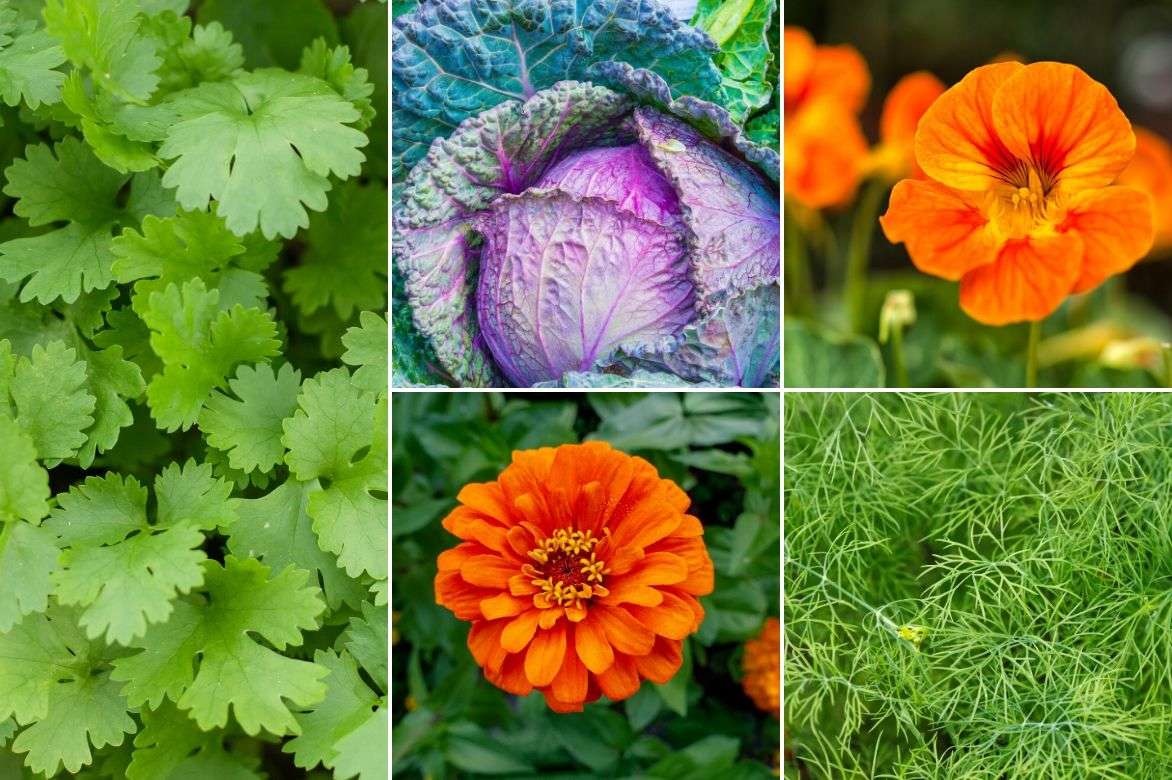
An example of association in the vegetable garden: coriander, cabbages, nasturtiums, zinnias, and dill
In a square of single plants, it will fit well with other herbs such as chervil, parsley, and dill. It is also a choice companion for mints, lemon balm, borage, and chives… Plant it alongside other plants with edible flowers and medicinal plants, which you can use as needed for making herbal teas or enhancing your salads.
In a natural garden, it will appreciate the company of yarrow or airy flowering perennials such as Angelica, Asters, Cosmos, and Astrantia.
Useful resources
- Discover the most beautiful collection of herb seeds to season your seasonal dishes as well as your infusions!
- The finest selection of 15 medicinal plants with numerous benefits… to grow in your garden is with us!
- It’s easy to succeed in the sowing of aromatic plants by following our tips!
- To grow coriander in a pot
- Subscribe!
- Contents
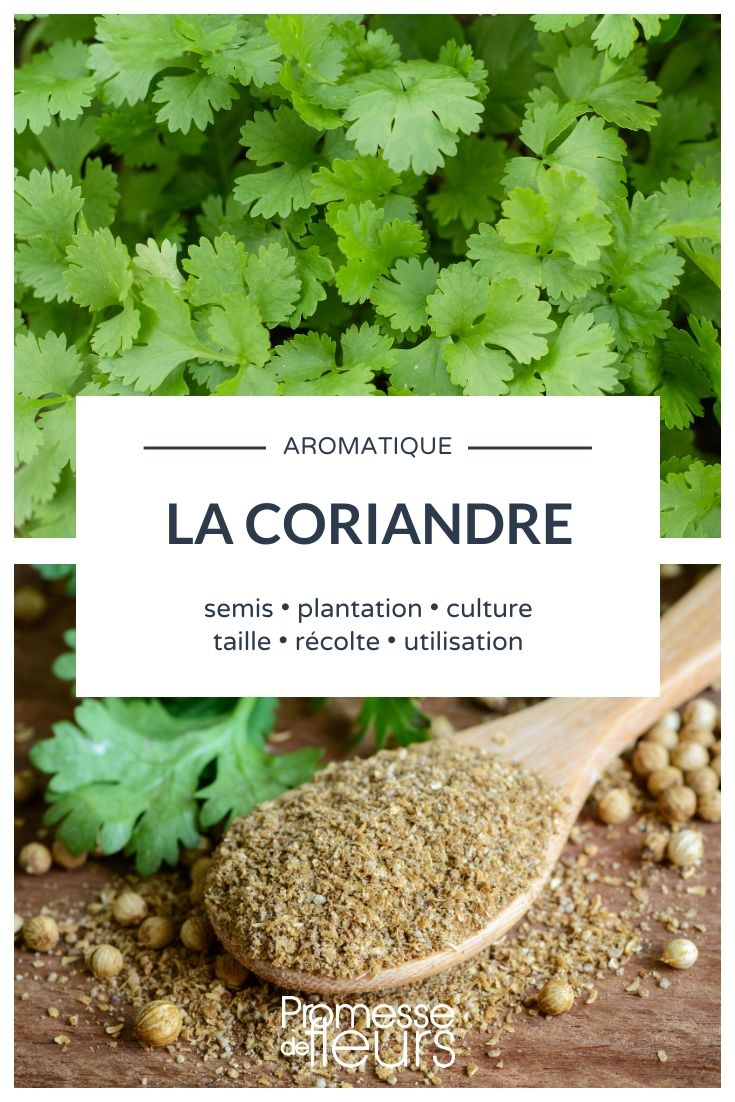


































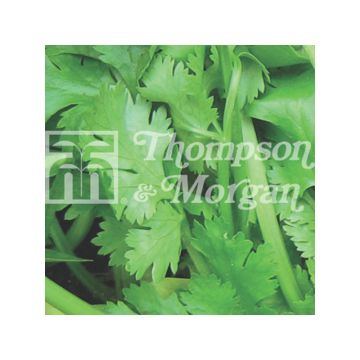

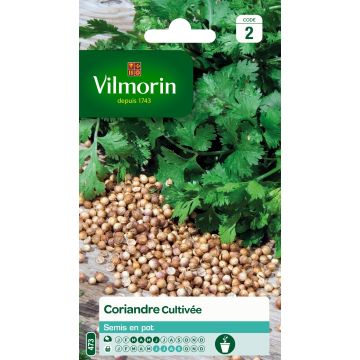
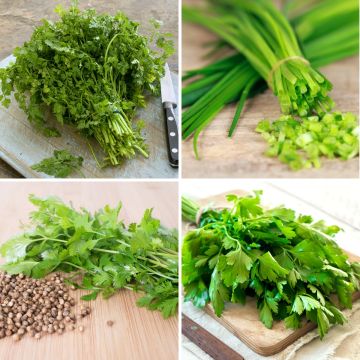

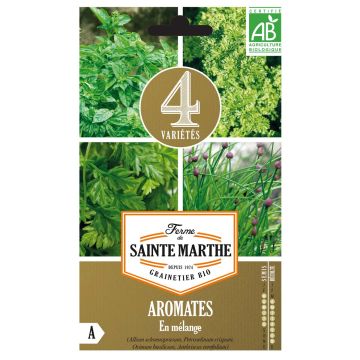
Comments